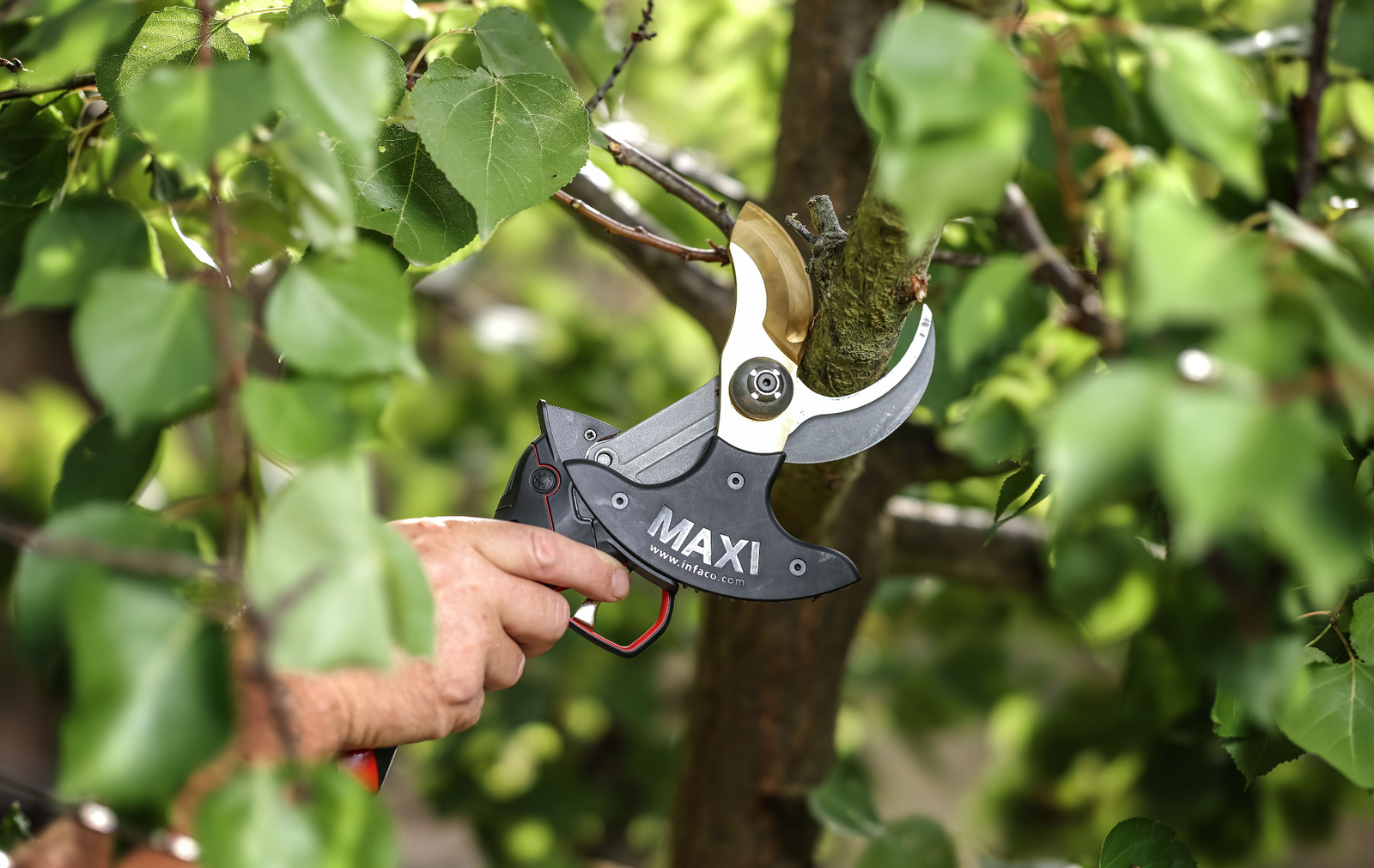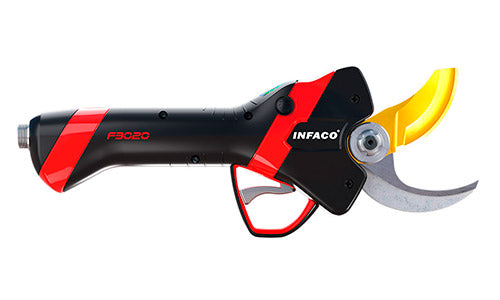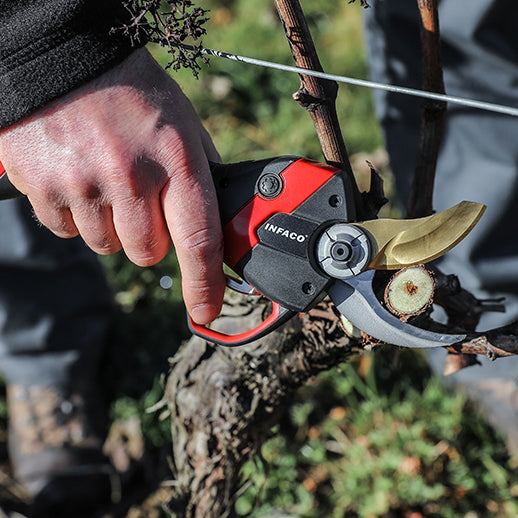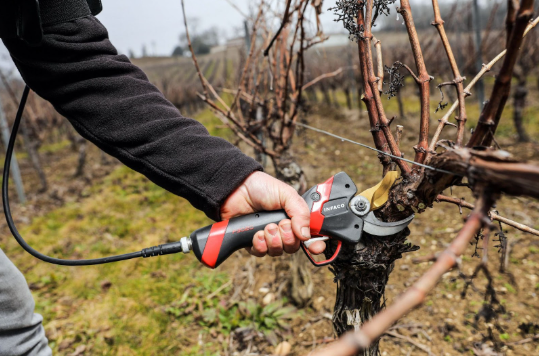Best Cordless Pruner: A Complete Guide for Professionals

Pruning remains one of the most demanding operations in modern agriculture. In vineyards, orchards, and nut groves, thousands of cuts must be performed every season. For contractors and growers alike, the difference between finishing on time and falling behind often comes down to the quality of their tools.
The best cordless pruner is not a gadget. It is a reliable partner in long-term productivity, worker safety, and profitability. This guide explores the core criteria to evaluate cordless electric pruners, the latest innovations shaping the industry, and practical insights from the field.
Why Professionals Switch to Cordless Pruners
For centuries, pruning was done with manual shears. But in large-scale vineyards or commercial orchards, the limitations became clear:
-
High physical strain leading to wrist, shoulder, and back injuries.
-
Reduced efficiency, especially in peak pruning windows.
-
Declining cut quality as fatigue builds.
Cordless electric pruners, first introduced in the 1980s, transformed pruning. By combining battery power with sharp blades and ergonomic design, they allow crews to work faster with less effort. In many regions, growers report productivity gains of 30–50% when switching from manual tools.
Beyond speed, cordless pruners improve worker health. Repetitive strain injuries are a leading cause of lost time in agriculture. Reducing the force required per cut directly translates to fewer injuries and more sustainable work practices.
Key Criteria to Evaluate the Best Cordless Pruner
1. Cutting Power and Capacity

The best cordless pruner must adapt to different crops and wood sizes. Professional-grade models cover 30–45 mm as standard. Advanced systems, such as this one, can handle up to 55 mm with specialized cutting heads, making them versatile across vineyards, orchards, and nut groves.
Pro tip: Choose systems with interchangeable cutting heads. A single pruner can then serve multiple roles, from delicate vineyard shoots to thick apple branches, reducing equipment costs and simplifying logistics.
2. Battery Life and Autonomy
In agriculture, downtime is expensive. A cordless pruner should deliver a full working day, 7 to 9 hours of autonomy, on a lithium-ion battery. Top-tier designs allow hot-swapping batteries, ensuring continuous work across shifts.
Recharge times also matter. A professional-grade battery should reach 80% charge in about 2 hours and full charge in 3. The ability to replace batteries after several years prevents premature tool obsolescence.
Pro tip: Always assess the cost and availability of spare batteries. A pruner is only as reliable as its energy supply.
3. Ergonomics and Comfort
Pruning means repetition: thousands of cuts per day, often in awkward positions. Ergonomic design is not a luxury; it is essential. The best cordless pruners weigh under 1 kg while maintaining power. Balanced weight distribution reduces wrist fatigue.
Additional features like adjustable blade openings and “soft mode” cutting are valuable. They let operators adapt tool behavior to crop type and personal comfort. This flexibility helps avoid overexertion and increases precision.
Studies from UC Davis confirm that ergonomic tools significantly reduce musculoskeletal disorders in vineyard workers. Over time, this means fewer injuries, lower turnover, and higher worker satisfaction.
4. Safety Systems
Safety remains a top concern. A sharp blade moving at high speed can be dangerous without safeguards. Modern cordless pruners integrate wireless safety sensors that instantly stop the blade if the operator’s hand is detected.

These systems have become a standard expectation for professional-grade equipment. They not only protect workers but also reassure farm managers responsible for crew safety.
Pro tip: Look for pruners with proven certifications and field-tested safety systems. Prevention reduces accidents, insurance claims, and long-term liability.
5. Durability and Maintenance
For professionals, durability matters more than purchase price. The best cordless pruners are engineered for longevity. Structured maintenance and revision programs extend product life, minimize downtime, and keep tools running at peak performance season after season.
Investing in a serviceable platform reduces waste and lowers the total cost of ownership. Easy access to spare parts and local servicing ensures that breakdowns do not jeopardize critical pruning windows.
Cordless Pruners for Different Crops
Vineyards (California, Oregon, New York)
In vineyards, speed and precision define profitability. Lightweight pruners with fast blade cycles are ideal. Vineyard managers often note that cordless tools double worker productivity, reducing labor pressure during short pruning seasons.
Cordless pruners also integrate well with tying systems, ensuring a smooth workflow from pruning to canopy management.
Apple Orchards (Washington, Wisconsin)
Apple orchards demand higher cutting capacity for thicker branches. Pruners with wide blade openings and high torque motors perform best. Interchangeable heads allow flexibility in mixed-age orchards, where branch diameters vary widely.
Nut Groves (Oregon Hazelnuts)
Nut groves present unique challenges: dense wood and high pruning volumes. Professionals prefer cordless systems that combine robust cutting power with ergonomic comfort. Adaptable heads and reliable battery autonomy are essential for handling seasonal intensity.
Innovations Shaping the Market
The cordless pruner industry continues to evolve. Among the most impactful innovations are:
-
Interchangeable cutting heads → one tool for multiple crops.
-
Eco-designed lithium batteries → lighter, longer-lasting, and recyclable.
-
Wireless safety systems → preventing accidents in professional crews.
-
Connectivity and smart monitoring → tools that track usage, signal maintenance, and optimize lifespan.
Together, these innovations make cordless pruners smarter, safer, and more sustainable.
From the Field: Professional Feedback
Across the U.S., professionals highlight three recurring advantages:
-
Productivity gains: faster cycles, fewer workers needed, and more consistent results.
-
Worker comfort: reduced fatigue and long-term injury prevention.
-
Safety reassurance: confidence for crews and managers alike.
In California’s vineyards, cordless pruners are seen as critical to managing labor shortages. Smaller crews can still complete pruning on schedule, protecting yields and profitability.
Long-Term Value: Beyond Purchase Price
Choosing the best cordless pruner is not about chasing the lowest price. It is about calculating return on investment:
-
Increased worker efficiency reduces labor costs.
-
Reliable tools ensure timely pruning, directly impacting yield.
-
Serviceable systems extend lifespan, lowering replacement costs.
The pruner that balances cutting power, autonomy, ergonomics, safety, and durability delivers the best long-term value.
Checklist: Choosing the Best Cordless Pruner
-
Cutting capacity: 30–45 mm standard, up to 55 mm with specialized heads.
-
Battery runtime: 7–9 hours per charge, quick recharge, hot-swappable packs.
-
Weight: ideally under 1 kg for ergonomic comfort.
-
Safety: certified wireless protection systems.
-
Maintenance: access to structured revision programs.
FAQ: Best Cordless Pruners
Q: What cutting capacity do professionals need?
Most crops are covered with 30–45 mm, but orchards and nut groves often require up to 55 mm with interchangeable cutting heads. This versatility ensures one tool can manage different plant architectures.
Q: How long should a cordless pruner run per charge?
Professional-grade batteries should last a full day in the field, typically 7–9 hours. Systems with hot-swappable packs prevent downtime and maximize crew productivity.
Q: Are safety sensors worth it?
Absolutely. Wireless detection systems stop the blade instantly if a hand is detected. This significantly reduces accident risks and offers peace of mind for farm managers responsible for safety.
Q: What role does maintenance play?
Structured maintenance is essential. It extends tool life, minimizes breakdowns, and lowers the total cost of ownership. Access to service networks is a strong differentiator between average and premium systems.
Q: Do cordless pruners work across different crops?
Yes. With interchangeable cutting heads and adjustable power settings, a single cordless pruner can be effective in vineyards, apple orchards, and nut groves. This flexibility improves ROI.
Conclusion
The best cordless pruner is not defined by the lowest price but by its ability to deliver consistent productivity, safety, and durability season after season. For professionals in vineyards, orchards, and nut groves, the right pruner means fewer injuries, higher efficiency, and reliable crop quality.
As the market evolves, innovations in cutting capacity, battery design, and safety systems are reshaping expectations. What remains constant is the professional’s need for tools that combine power with precision, and endurance with comfort.
For further insights into pruning practices and vineyard management, see resources from the International Organisation of Vine and Wine (OIV) and UC Agriculture & Natural Resources.









